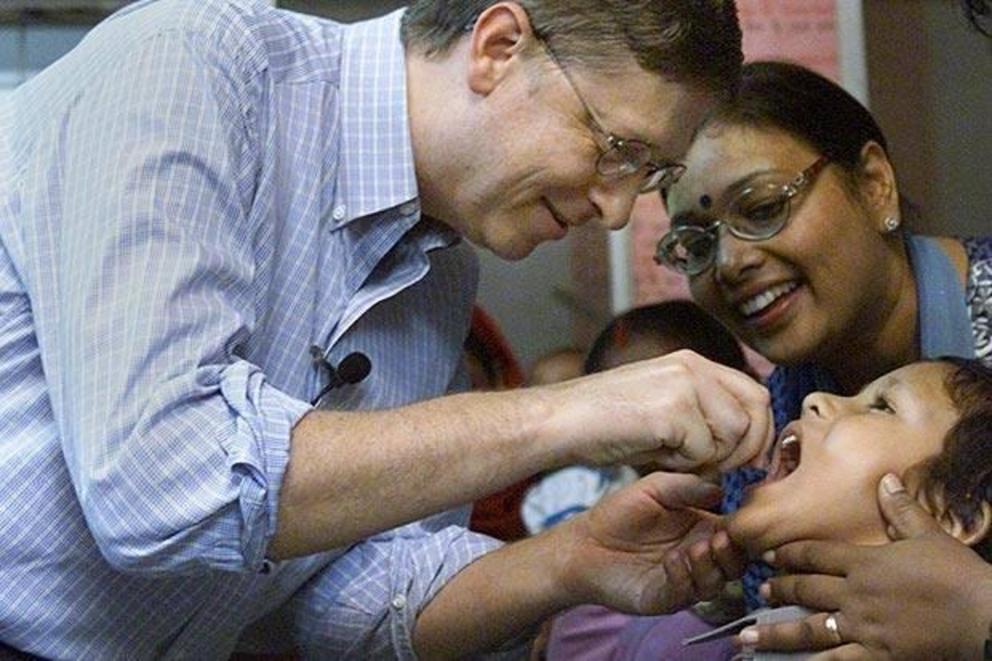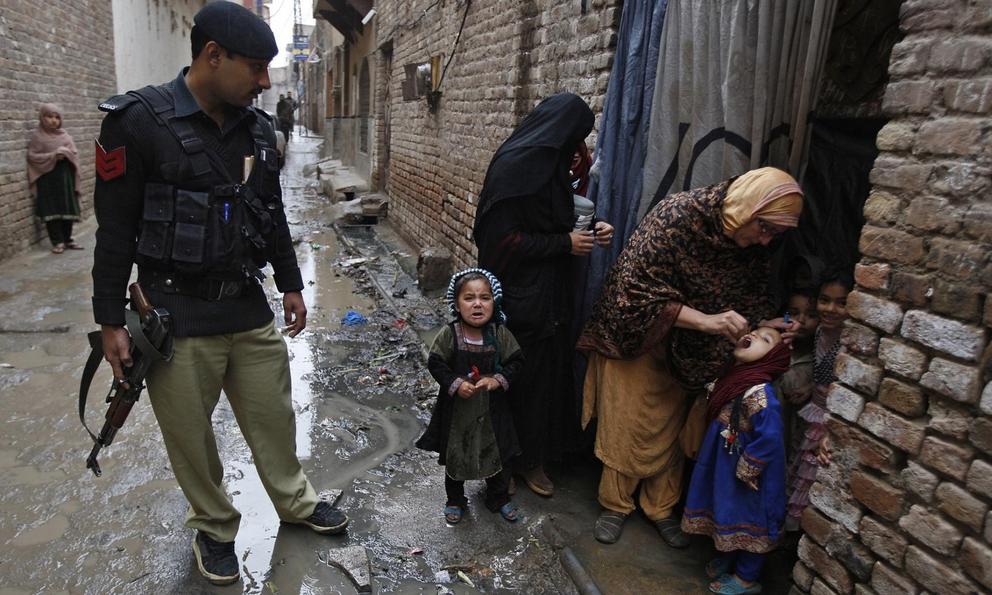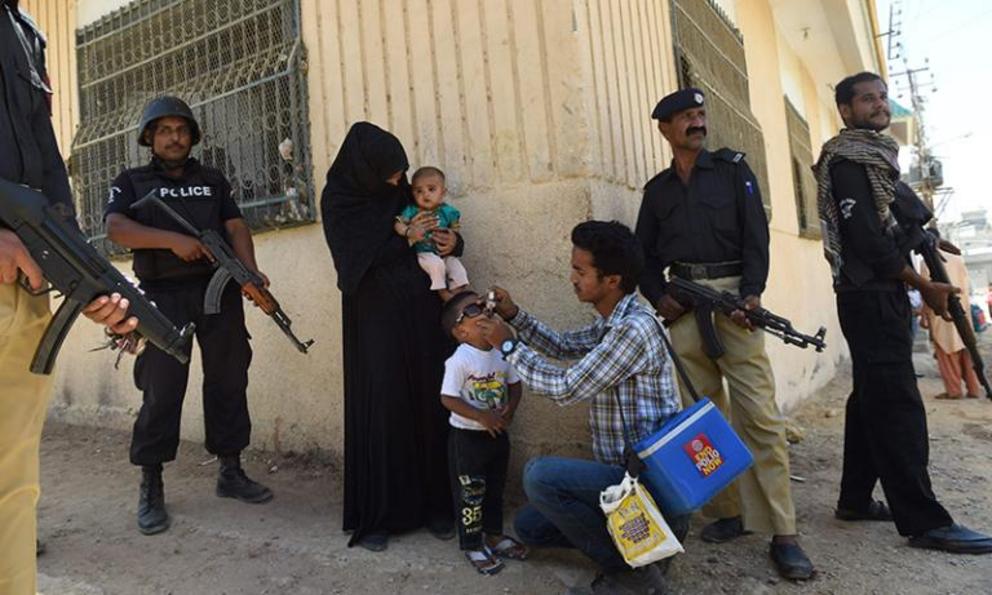Big pharma and corporate media finally admit the oral polio vaccine is a failure – causes polio instead of preventing it
Banned in Western countries and Israel, the oral polio vaccine is not trusted in poor countries and is often met with resistance among parents in places like Pakistan and Afghanistan where they are forced upon the population at gunpoint. Photo by Asif Hassan/ AFP
In an almost unprecedented admission of vaccine failure, National Public Radio (NPR) recently published a show explaining how the present-day oral polio vaccine is a failure, and is actually contributing to the rise of polio in poor countries.
In it’s Weekend Edition Saturday show, NPR’s Scott Simon and Jason Beaubien produced a show titled: “How The Oral Polio Vaccine Can Cause Polio.”
They report that the U.S. CDC is now recognizing that there is a problem with the oral polio vaccine, which as a live-virus vaccine is actually causing polio around the world, a fact reported here at Health Impact News for over 6 years now.
Of course when we, or any other alternative media source, report this or any other negative news about vaccines, it is labeled as “Fake News,” and it is censored in social media, particularly on Facebook, if the article becomes too popular.
Apparently, this problem of polio being caused by the oral polio vaccine has become such a problem worldwide, that someone gave NPR the approval to cover the story, probably for “damage control.”
SIMON: I understand the problem begins with what’s called a live vaccine, which has little bits of weakened polio virus in it, given to children around the world. What seems to have gone wrong?
BEAUBIEN: Yeah, that is the crux of it – that this – the oral polio vaccine that’s used primarily in low- and middle-income countries – it’s been the workhorse of this global effort to eradicate polio. But it is a live vaccine. It’s cheap. It’s easy to administer.
However, this live vaccine is continued to be used worldwide. And while you’re doing that, some of that vaccine has gotten out into the world.
And it’s mutated. It starts circulating again, just like regular polio. But early on, it’s just – it’s still a vaccine. It’s not dangerous. And then slowly, it sort of regains strength. And they’re finding they can actually genetically see this – that scientists can actually trace it back directly to the vaccine. And now these vaccine-linked cases are actually causing more cases of paralysis each year than actual traditional – what scientists call wild polio.
The reporters on NPR are quick to point out, of course, that this is not a vaccine currently offered in the U.S.
SIMON: Now, we should underscore, Jason, this is not the version of the vaccine that’s given to youngsters in the United States.
BEAUBIEN: Right. So in the United States and in Europe and other countries like that, it – we’re using an injectable vaccine, which is a dead vaccine. It is not a live virus, and it cannot cause polio. So that should not at all be a concern. The issue, however, is that it’s an injection that has to be given. It’s given four times between the ages of 2 months and 7 years. So just administering it is difficult.
And just frankly, there is not enough global stockpile of that vaccine to vaccinate all of the children around the world, you know, four times over the course of their childhood. So there’s some real problems with that. That, ultimately, would be the goal – is to eventually get to the point where you’re not using oral polio vaccine, but it’s not logistically possible at this point.
Really? The reason the oral polio vaccine is given in poor countries is because there aren’t enough injectable vaccines? With excuses like that, is it any wonder that parents around the world in poor countries are questioning this vaccine which is responsible for crippling probably hundreds of thousands of children worldwide with Accute Flaccid Paralysis or Vaccine-derived Polio?
 Bill Gates giving the oral polio vaccine to a child in India. Bill Gates is not a medical doctor, and does not have a license to practice medicine.
Bill Gates giving the oral polio vaccine to a child in India. Bill Gates is not a medical doctor, and does not have a license to practice medicine.
For the many years that Health Impact News has been covering the oral polio vaccine tragedy around the world, a vaccine that has long been rejected as unsafe and not used in the U.S., Europe, Israel, and other wealthy nations, but is crippling children in poor countries like India, Africa and Pakistan, Big Pharma and their sponsored “mainstream” media have been criticizing parents in these countries as being “uneducated” for refusing the vaccine which is then forced upon them, often at gun point.
 The oral polio vaccine is so easy to give, unlike an injection, that health officials give it to children on the street, not even checking medical records to see if the children might have already been vaccinated.
The oral polio vaccine is so easy to give, unlike an injection, that health officials give it to children on the street, not even checking medical records to see if the children might have already been vaccinated.
This is just another example of the fact that vaccines can never survive in a free market where one has to prove the success of one’s product to survive in the marketplace, but that government intervention, censorship of science and harmful side effects, and physical force is necessary to get people to comply with mandated vaccinations.
Will future world wars and national revolutions arise from vaccine resistance?
Polio Vaccination—Still Causing Polio After All These Years
by the Children’s Health Defense Team
It is exceedingly rare for the public health community to admit to any problems with vaccination. Every so often, however, circumstances force officials into making just such an acknowledgement.
The current debacle seeping out into the news—which is actually a long-running tale minted anew—is that oral polio vaccines are “spawning virulent strains” of polioviruses.
The alarming surge in vaccine-derived polio cases presents vaccine planners with a “quandary” or “conundrum”—because “The very tool you are using for [polio] eradication is causing the problem.”
The oral polio vaccine (OPV) is in use around the world and constitutes the “workhorse” of global polio eradication efforts due to its low cost and ease of administration. The OPV contains live but weakened polioviruses that match up to wild polioviruses.
Vaccine researchers have long known that these OPV-derived viruses can themselves cause polio, particularly when they get “loose in the environment.”
In settings with poor sanitation and iffy hygiene, the vaccine viruses can easily “find their way into water sources, and onto contaminated hands or foods,” where they can then launch a self-perpetuating chain of transmission.
Researchers concede that an OPV virus “can very rapidly regain its strength if it starts spreading on its own,” acquiring “mutations that make it basically indistinguishable from the wild-type virus.”
In other words, there is no meaningful difference between a wild and OPV-derived poliovirus “in terms of virulence and in terms of how the virus spreads.”
The conundrum
Until recently, the OPV was trivalent, containing three vaccine serotypes corresponding to the three types of wild polioviruses (types 1, 2 and 3).
In 2015, however, global public health agencies declared wild poliovirus type 2 eradicated and, in 2016, they decided to oversee a closely coordinated 155-country “switch” to a bivalent oral vaccine that includes only types 1 and 3.
The ostensible rationale for this global maneuver was to take vaccine-derived type 2 virus out of the running; if wild type 2 viruses had disappeared, “the thinking went,” it would be “unethical to expose children to the risk the vaccine viruses posed,” particularly since type 2 had been responsible for close to 90% of the vaccine-derived polioviruses circulating since the year 2000.
However, in a what-could-possibly-go-wrong scenario, the lingering background presence of the type 2 vaccine virus has prompted a spectacular backfiring of the “switch,” with vaccine-derived polio outbreaks emerging in numerous countries.
Outbreaks unsquelched
The Global Polio Eradication Initiative (GPEI) is a combined effort of the World Health Organization (WHO), UNICEF, the U.S. Centers for Disease Control and Prevention (CDC), the Bill & Melinda Gates Foundation and Rotary International.
In pre-“switch” computer modeling, the GPEI’s scientific advisors predicted that some vaccine-virus-derived outbreaks would inevitably occur. However, they confidently asserted that they would be able to “quickly squelch” any such outbreaks through—what else?—the “judicious use of a new live vaccine…effective against only type 2.”
In effect, they advised taking a “gamble” that the monovalent vaccine “would not spawn new outbreaks of its own.”
In Africa, at least, the gamble has failed. The frequency with which type 2 vaccine-derived outbreaks are occurring has far exceeded projections—and the rush to administer the new monovalent type 2 vaccine appears to be exacerbating rather than stemming the problem.
In an astonishing admission, a CDC virologist has stated that due to the stop-gap use of the new type-2-only vaccine, “We have now created more new emergences of the virus than we have stopped.”
Another vaccine expert has remarked, “if you just keep trickling in with a little bit of [monovalent] vaccine every time you think you have a problem all you’re doing is reseeding [more transmission chains].”
There had been no cases of wild poliovirus on the African continent since September 2016, but by July 2019, the WHO was cautioning that there was a high risk of ongoing type 2 vaccine virus spreading across Africa.
Outbreak investigators have been documenting an uptick in circulating vaccine-derived poliovirus type 2 in both human and environmental samples since mid-2017 (two years after the “switch”), generally obtaining human samples either from children presenting with acute flaccid paralysis (AFP) or from “healthy community contacts.”
Although the WHO describes polio as just one of AFP’s possible causes, African labs have been isolating type 2 vaccine virus in case after case of AFP.
To date, surveillance reports have noted the presence of the vaccine-derived type 2 poliovirus in Angola, Cameroon, Central African Republic, the Democratic Republic of the Congo, Ethiopia, Ghana, Kenya, Mozambique, Niger, Nigeria, and Somalia. In Nigeria, type 2 has spread from the north of the country to Lagos—Nigeria’s largest and most densely populated city.
In Ghana, soon after investigators found type 2 vaccine viruses in sewage in the capital of Accra, a toddler 400 miles away was diagnosed with vaccine virus paralysis—representing Ghana’s “first ever” reported outbreak of type 2 vaccine-derived poliovirus.
On September 19, ABC News announced a polio outbreak in the Philippines, caused—as confirmed by WHO and UNICEF—by “vaccine-derived poliovirus type 2.”
The “outbreak”—which has thus far affected just two children and some sewage samples—is unfolding two decades after the WHO declared the Philippines to be polio-free.
Blaming the situation on the decline in public acceptance of routine vaccination—following the rollout of a dangerous dengue vaccine that killed as many as 119 children in 2016-2017—the two global health agencies have sternly asserted that the only way to get back on track with polio is to vaccinate at least 95% of children under age 5. The Philippine government is complying, launching an aggressive polio vaccination campaign.
In other countries ranging from Myanmar to Indonesia to Papua New Guinea, surveillance programs are also reporting cases of paralytic polio resulting from circulating vaccine-derived poliovirus type 1.
New and improved = same old, same old
The presence of type 2 vaccine viruses “over a widening swath of territory” in Africa and elsewhere is apparently disheartening to polio eradication enthusiasts, but not to worry, they have another ace up their sleeve—another new and improved polio vaccine!
In fact, two new polio vaccines are in the works. One is a “novel” genetically engineered oral vaccine supported by the Gates Foundation; the second is an inactivated vaccine hypothesized to be “powerful enough to end outbreaks.”
As the WHO’s lead polio researcher has stated, “The race is on” to deploy at least one of the two vaccines under the WHO’s “emergency use protocol” by as soon as mid-2020—even before licensure. Conveniently, the new oral vaccine’s manufacturer, Bio Farma, will soon “have the capacity to make 35 million doses a month.”
Meanwhile, the Gates Foundation is “pushing hard to get the [new oral] vaccine into the field as soon as possible,” speculating that it will have a lower risk of transmitting vaccine virus—however, the Foundation cautiously notes that “the only way to know for sure will be to use the vaccine.”
Eventually, the global public health community has set a goal of ending all use of the OPV and switching over to exclusive use of the inactivated polio vaccine (IPV) administered via injection, making the assumption that the IPV is incapable of causing vaccine-derived polioviruses to circulate.
However, as Children’s Health Defense recently described, from the 1950s on, the U.S. has witnessed serious cases of paralytic polio induced by both types of polio vaccine—injected and oral. Similarly, a reporter describing the glitches with the “switch” observed that “Even children who have received IPV…can be infected by and transmit the vaccine viruses” [emphasis added].
In Pakistan, where wild polioviruses are still on record as circulating, some citizens in poor communities are refusing the oral polio vaccine, questioning a one-trick public health charade that never does anything to address more pressing health threats such as lack of running water and sanitation.
Rather than respond to these reasonable concerns, the government has taken to jailing uncooperative parents, while the latter resort to “hiding their children or using fake finger markings to pretend they have been vaccinated.”
Whether in Pakistan, Africa or the U.S., it is time to stop equating public health with vaccination and time to admit that vaccination programs often leave new and worse problems in their wake than those they were intended to solve.
Read the full article at ChildrensHealthDefense.org.
For the rest of this article please go to source link below.

